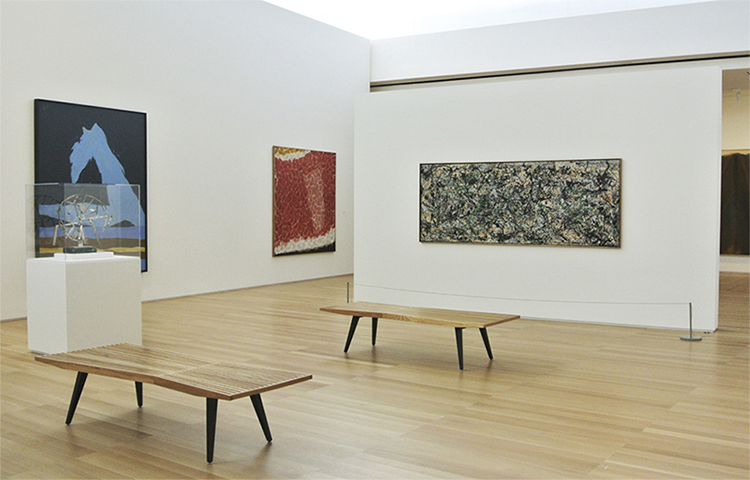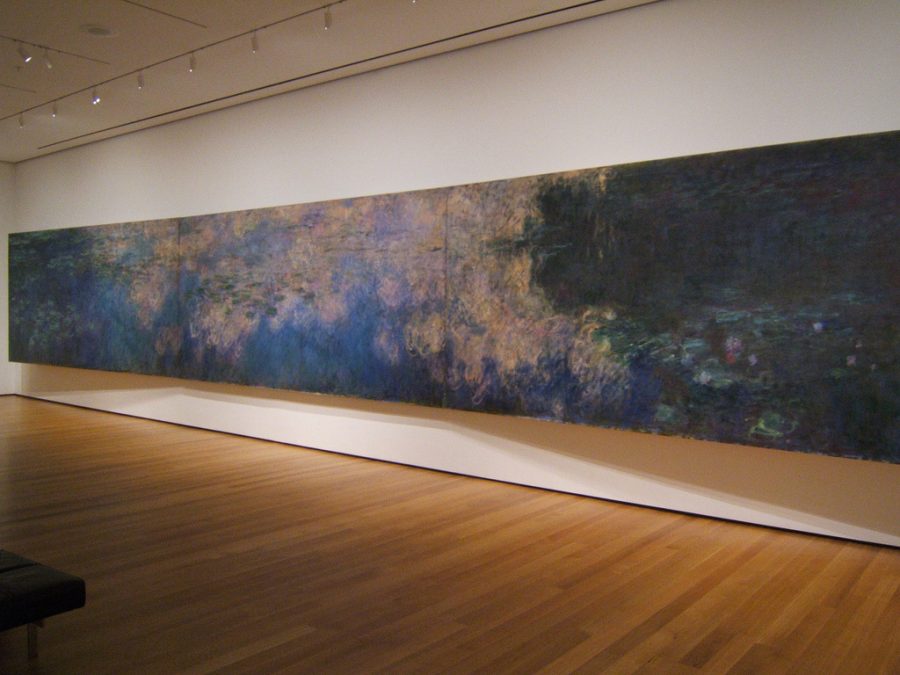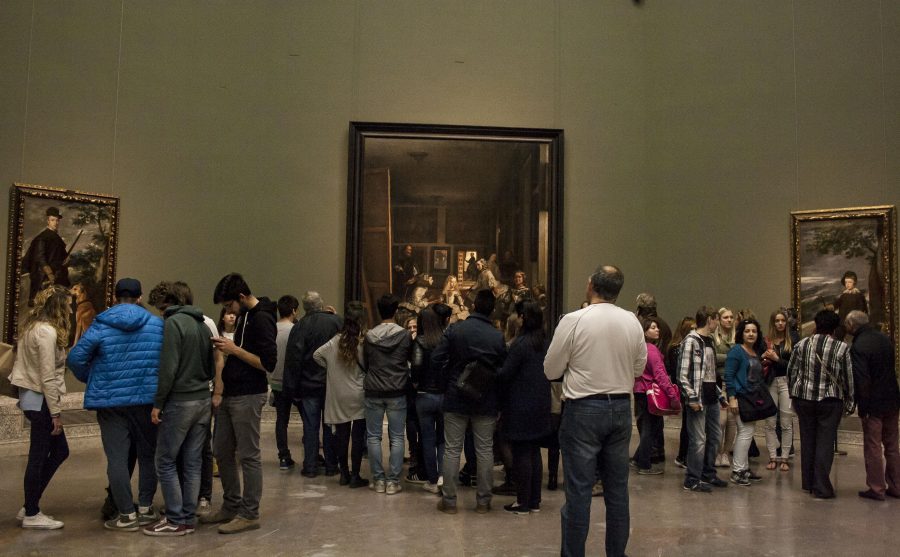Hello and welcome to An Artist’s Scrutiny. In this blog series, I will explore artworks that I’ve encountered, give my humble knowledge of the artist’s intent and techniques, and provide an insight to how those works have impacted my own artworks and my perception on life.
Before you proceed, it is important to note that in order to be able to fully appreciate a piece of art, you have to be there standing in front of the real thing. The photographs that I gathered, as well as any photograph of artworks, cannot fully provide the same feelings that a first-hand experience can provide.
Last summer, I had the opportunity to visit the Stanford’s Anderson Collection. This collection is comprised of 121 modern and contemporary American paintings and sculptures Stanford University the Anderson family donated. When I first entered the museum, I instantly felt like the world suddenly expanded; I was shrunk down to a small, insignificant dot within that enormous space. On the white walls hung dozens of larger-than-life art pieces. The art geek inside of me screamed a little when I saw, on the center wall, a painting of Jackson Pollock.

Photo by Dzung Nguyen
At first glance, most people would dismiss his paintings as random scribbles or a chaotic mess (I am speaking from experience. As I was examining the painting, a lady behind me told her nine year-old that he could “make something like that no problem.”). But the devout art critics could identify at least eight, if not all, out of the twelve elements and principles of art in Pollock’s piece.
The Pollock’s artwork that I had the chance to witness firsthand is called Lucifer, created in 1947. Lucifer is one of the more noteworthy works of Pollock that deserve more attention than it has gotten. It’s among the earliest examples of the artist’s groundbreaking approach to revolutionize how this age and its components are illustrated. The artist proclaimed in a 1951 radio interview, “It seems to me that the modern painter cannot express this age, the airplane, the atom bomb, the radio, in the old forms of the Renaissance or any other past cultures. Each age finds its own technique.”
Lucifer was created in a manner similar to Pollock’s works in previous years. First, he embedded small pieces of gravel to augment the texture of the piece. With the canvas laid out on the floor, he began to perform a series of painting techniques: pouring, splattering, and dripping. He once claimed that by defying the conventional, upright painting practice, he is able to apply paint to his canvases from all directions and let his uninterrupted unconsciousness control the movement of the painting.
As I was standing in the Anderson Collection in front of Lucifer, I felt overwhelmed. As one with a limited background in observing art, I did not not exactly where to start. After a good 10 minutes staring at the painting, I decided to zoom in and focus on individual fractions of the work. I picked out a single line and allowed my eyes to find its starting point and traced it through the painting.
All of a sudden, I sensed a powerful energy. This must be what they called “flow.” I felt like I was entering the artist’s “stream of unconsciousness,” as if I was indirectly conversing with Pollock through his artwork. The brushstrokes became bolder near the corners. Is he emphasizing the destructive impact of the atomic bombs? The brushstrokes intertwined more heavily in the center.
Is he highlighting the strengthening relations between nations post World War II?
At the Anderson Collection, I came across dozens of artworks, but Lucifer was the one that left the greatest impression on me. I’ve always approached art in a linear fashion: I start with a blank canvas, sketch out my ideas, then add color. To me, dripping paint in unplanned directions and letting my unconsciousness control the process is so far from one what I’m used to. After experiencing Pollock’s work, I convinced myself to derail from the linear procedure and towards a more relaxed and fluid approach to making art. I picked up the brush and onto the blank canvas, I began to let my own unconsciousness control the creating process, letting go of the fears that the colors would not compliment each other, or that the color would go outside the lines.
How would you interpret Pollock’s Lucifer? Leave a comment below!






















































































Lisa Zhuang • Nov 7, 2016 at 3:36 pm
Orrr, maybe he’s emphasizing how simple looking it is to do some things, like drop a bomb, but how complicated of a product it can create.
Lisa Zhuang • Nov 7, 2016 at 3:32 pm
I wonder why he titled it Lucifer?
Well, I have never interpreted paintings much before, but perhaps what he means is that while he is dripping each line or speck, it seems very simple, because it is just a drip of paint, just like how one event in a war is just one event. But then when it all accumulates, it looks chaotic and there’s so much going on. It lets us appreciate how complicated things are when you look at them as a whole, but how simple things are when you pick them apart.
Dzung Nguyen • Nov 8, 2016 at 9:31 pm
That’s a really interesting interpretation. I don’t know exactly what his intention for the title was, but I do agree with you. The painting as a whole seems complicated and chaotic, but when you look at the individual components and consider the way the artist created the piece, everything seems a lot simpler.